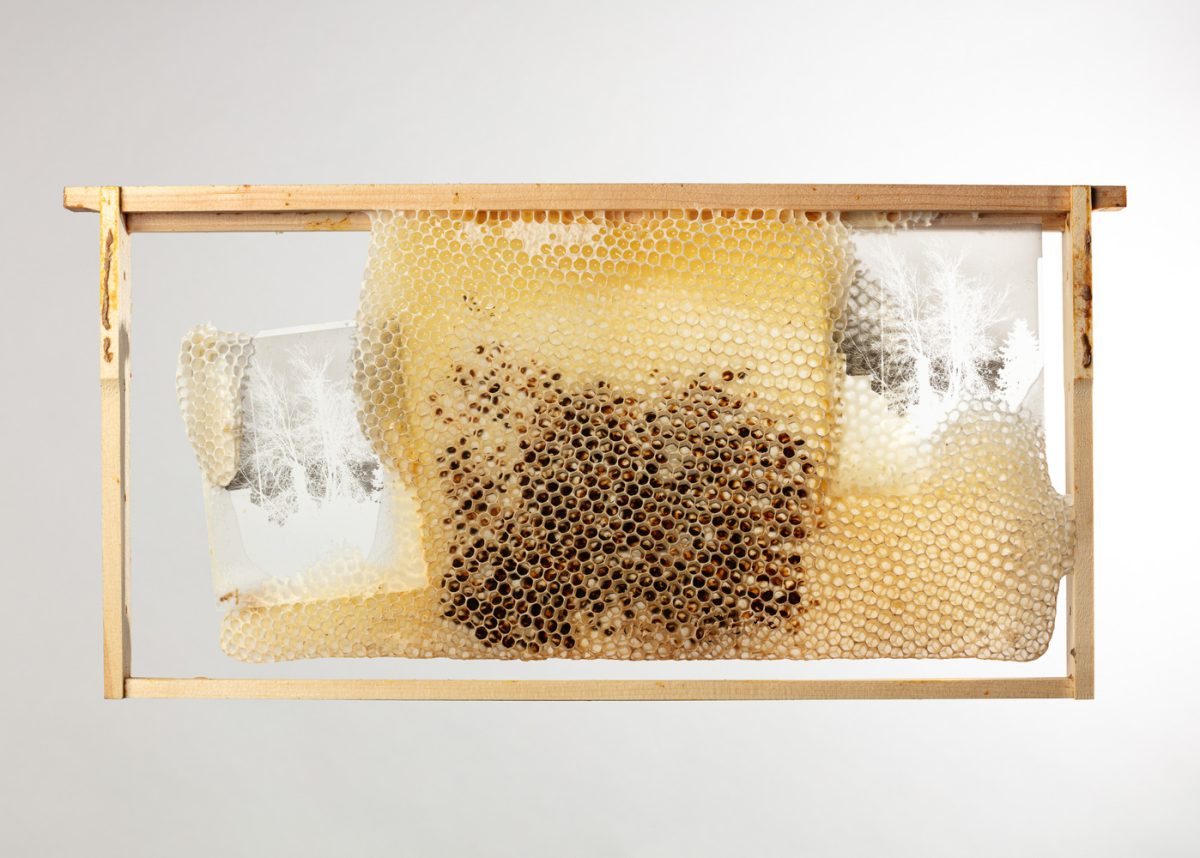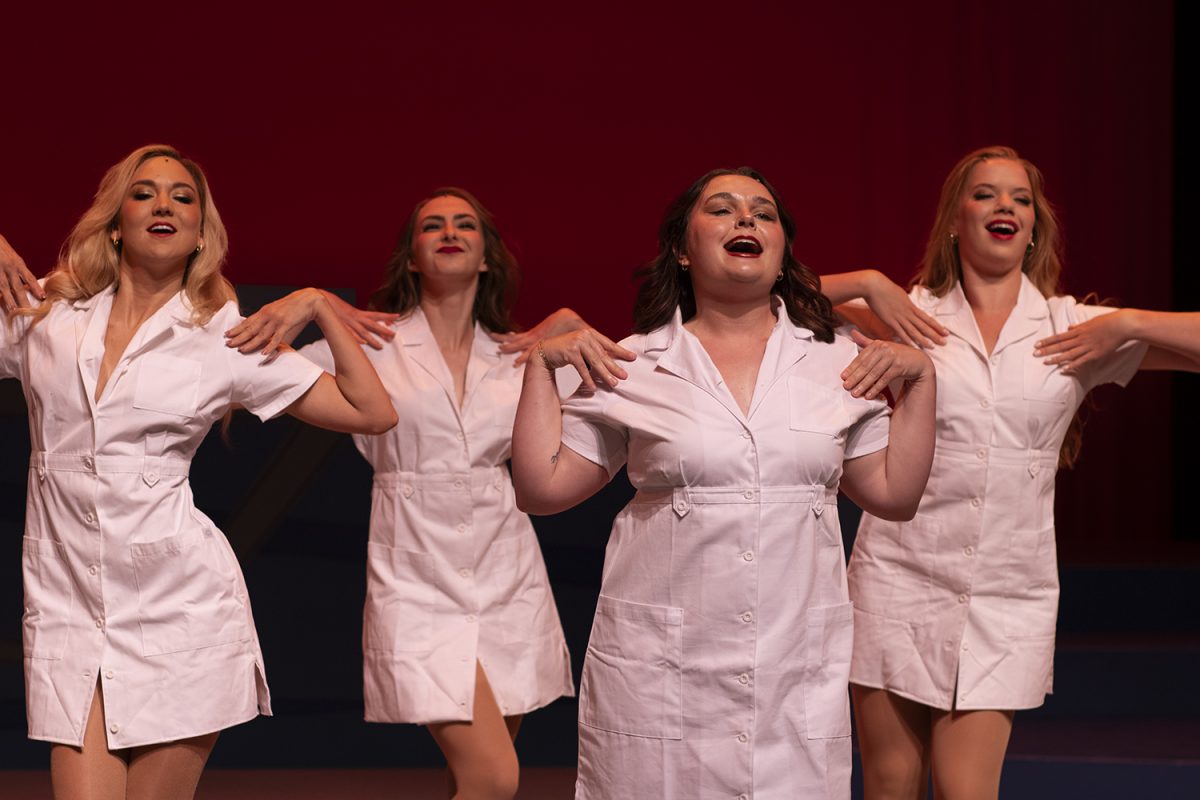While some people rely on a stiff drink to unwind at the end of the day, French-American artist Thalassa Raasch turns to honeybees.
Raasch, an assistant professor at the University of Iowa, started beekeeping as a 17-year-old living in Minnesota. Wanting to spend more time in nature, their mom handed them a jar of farmer’s market honey and told them to call the number on the label.
Soon enough, Raasch spent the next two summers apprenticing with a local beekeeper, checking on hundreds of hives and asking thousands of questions.
In April, they installed two honeybee colonies on the third-floor terrace of the UI’s Visual Arts Building in an exploration of interspecies art as their creative research project.
After teaching at various institutions on the East Coast, namely Rhode Island School of Design and Maine College of Art and Design, Raasch brought their expertise to the UI in 2020. They still have their own hives in Maine, checking on them as often as they’re able, but finally having bees with them in Iowa has made them feel more settled.
Caring for bees connects Raasch to the landscape, the seasons, and the weather of their environment. Likewise, the bees also bring them a certain internal peace.
“It’s an excuse to slow my breathing down, notice patterns in front of me, and figure out through observation what’s happening,” Raasch said.
Raasch teaches photography at the UI but considers themself an interdisciplinary artist. Their work uses different media like audio, photography, and other materials to explore boundaries, translation, and loss.
“There’s something really creative and wonderful about interacting with other animals or species because they have such a different way of encountering the world,” Raasch said.
As an artist, one of Raasch’s goals is to help shift perspectives and to view their subjects differently.
In a 2023 article, The Guardian reported that scientists have only recently started to study the complex behaviors and emotions of bees. Raasch’s project merges their love for bees and interest in animal behavior by presenting the bees with different materials.
Bees communicate through touch, feel, and sound. Raasch plans to place a bee-sized microphone inside a hive, through which viewers will be able to listen to the colony without intruding on them.
Raasch’s methods also include offering the bees images, work from their personal archive including images of their family, and placing them near the top of the hive where they make their honey. They wait a few days before checking the bees’ work, letting them spend time with the image.
Then, when the image comes out, Raasch searches for signs that would indicate the bees’ reaction to the images. They look for whether they chewed the image, built scaffolding on it, or produced honey on it.
Though Raasch is still working on these interpretations, they see the bees as a way to connect to family history and loss.
“Suddenly you’re the size of a honeybee, and the way you’re experiencing the hive is at their level,” Raasch said.
Raasch is still in the early stages of a project they expect will last two to three years. They described the bees as “another collaborating artist,” which means they will have to trust the bees with their art and be patient with the process.
“As much as I would like to have expectations of the bees, I’m always sort of delighted when they subvert those,” Raasch said.












